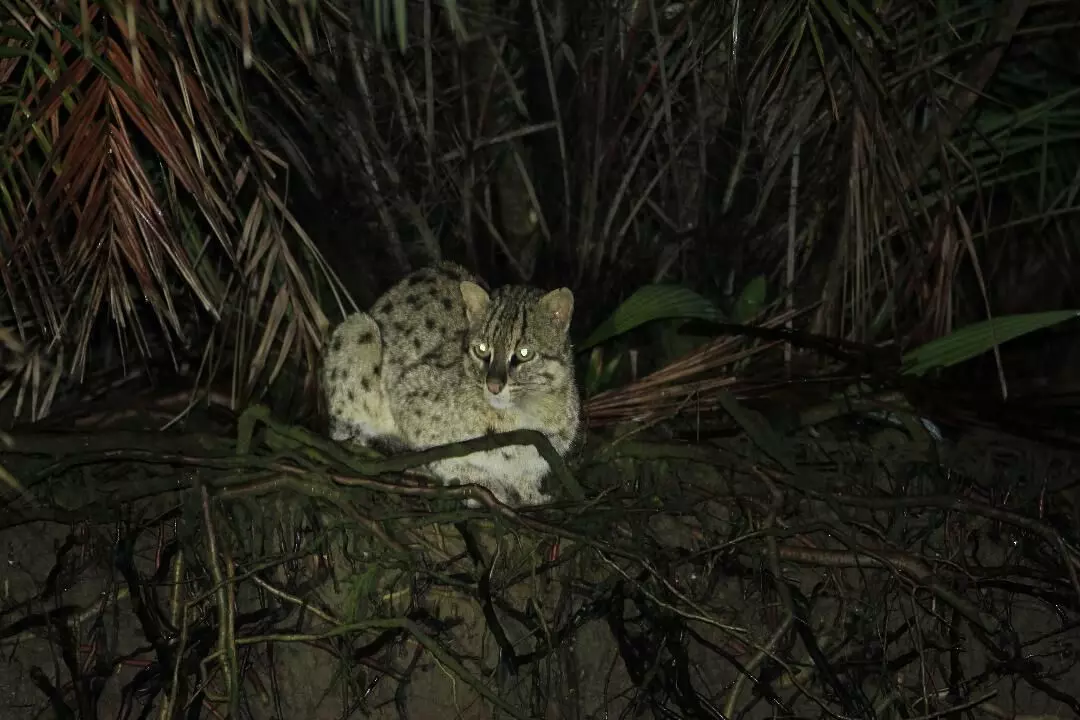In the world’s first fishing cat census conducted in Chilika Lake in Odisha, 176 fishing cats have been reported by the Chilika Development Authority. The census report was released two days back on June 5, on the World Environment Day. The Chilika Development Authority conducted this census in collaboration with The Fishing Cat Project.
This recent census is the world’s first such population estimation for the fishing cat that was conducted outside the protected area network. The estimation was conducted in two phases. Phase-I was conducted in 2021 in the 115 square kilometre (sq km) marshland present in the north and north-eastern section of Chilika and its surrounding areas. Phase-II was conducted this year in the Parikud side along the coastal islands of Chilika Lake, a brackish water lagoon.
“Both phases combined, a total of 150 camera traps were deployed with each trap staying in the field for 30 days. Thereafter, Spatially Explicit Capture Recapture method was used to analyse the data,” said Susanta Nanda, Chief Executive Officer of Chilika Development Authority. “It was truly participatory in spirit since local fishermen and villagers of Chilika were the primary participants in this exercise. Without their support, the world’s first such population estimation outside protected areas on this globally threatened cat, would not have been possible,” the official added.
“Apart from the villagers, ten graduate and post-graduate students also volunteered during the exercise. Chilika Wildlife Division staff actively facilitated and participated in the population estimation. Such a participatory effort involving multiple stakeholders for studying this elusive and threatened species sets a wonderful precedent,” said Partha Dey, co-founder, The Fishing Cat Project, which is the world’s longest running conservation and research project on the fishing cat.

176 fishing cats have been reported by the Chilika Development Authority.
Also Read: Good news on gharial conservation from Satkosia wildlife sanctuary in Odisha
The endangered fishing cats
The fishing cat (Prionailurus viverrinus) is a medium-sized wild cat of South and Southeast Asia. It is listed as ‘endangered’ on the IUCN Red List which means that it faces a high threat of extinction in the wild. The Convention on International Trade in Endangered Species (CITES) lists the fishing cat on Appendix II part of Article IV of CITES, which governs international trade in this species.
The fishing cat is a nocturnal animal and is not an easy animal to trace. Females weigh around 8-10 kilograms (kgs) and males weigh around 10-15 kgs. It locates fish from the banks of shallow wetlands, dives in after the fish and catches it with its hooked claws.
“Fishing cats also hunt livestock and poultry in the villages near the forest and get into conflict with people. Abundant fish in Chilika Lake and distance from human habitation has made it a suitable habitat for fishing cats in Chilika,” said Nanda.

The fishing cat faces a high threat of extinction in the wild.
Also Read: Endangered fishing cat finally ‘captured’ on camera at Panna Tiger Reserve
Fishing cats are globally threatened, primarily due to the destruction of wetlands, which are their habitat. “Wetlands in Asia are being lost at alarmingly rapid rates and proper data on their current status or even baseline data in many countries are missing. The status of many wetland species remains understudied and highly threatened,” said Tiasa Adhya, co-founder, The Fishing Cat Project.
“Tracking specialist species such as the fishing cat gives us an indication of what might be happening to these ecosystems, which are safeguards against climate change and droughts,” she added.
Five year conservation plan for fishing cats
Earlier this year, the Chilika Development Authority had declared its intent to adopt a five year action plan for fishing cat conservation in Chilika. “In collaboration with TFCP, we are soon going to share a Fishing Cat Action Plan that is socio-ecological in essence. We have already begun a year long patrolling and monitoring programme on the cat and its sympatric species,” said Nanda.
“Along with scaling it, we will promote sustainable and traditionally harvested wetland products to prevent wetland conversion, establish a rescue and rehabilitation centre, promote small scale experiential and educative wetland tourism, adopt habitat restoration programmes as well as education programmes,” the official added.
“The fishing cat spends most of its life in areas of dense vegetation close to water and is an excellent swimmer. One of the major threats facing the fishing cat is the destruction of wetlands, which is its preferred habitat,” said Hemanta Rout, an environmentalist and the president of Gahirmatha Marine Turtles and Mangrove Conservation Society.
The water bodies of Chilika Lake are famous for Irrawaddy dolphins and migratory birds in the winter. But sadly, the fishing cat, a lesser known species which inhabits this Ramsar site, does not enjoy the same status as the dolphins, Rout said.
Also Read: Record nesting of endangered turtles in Odisha underlines decades of conservation efforts


















